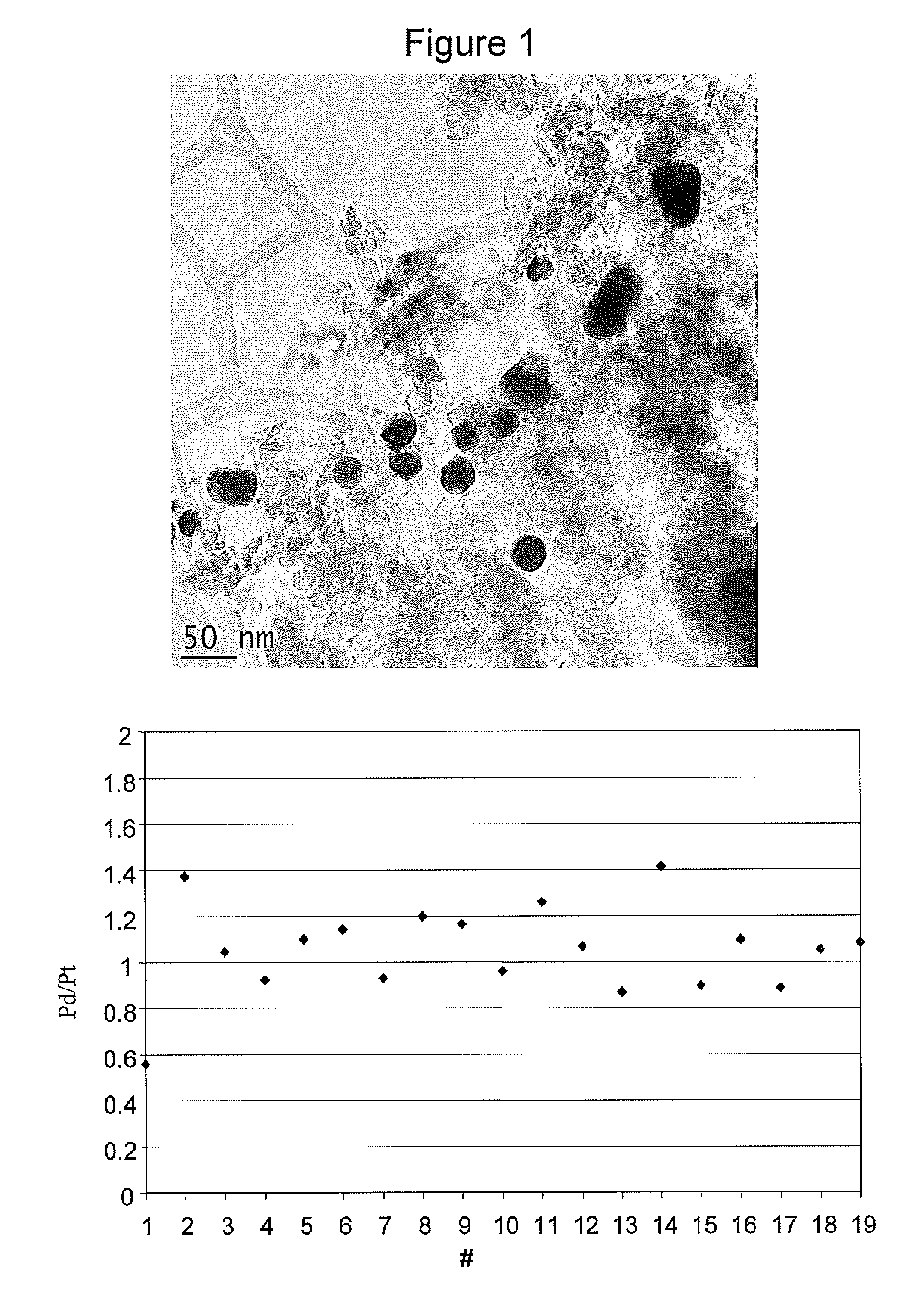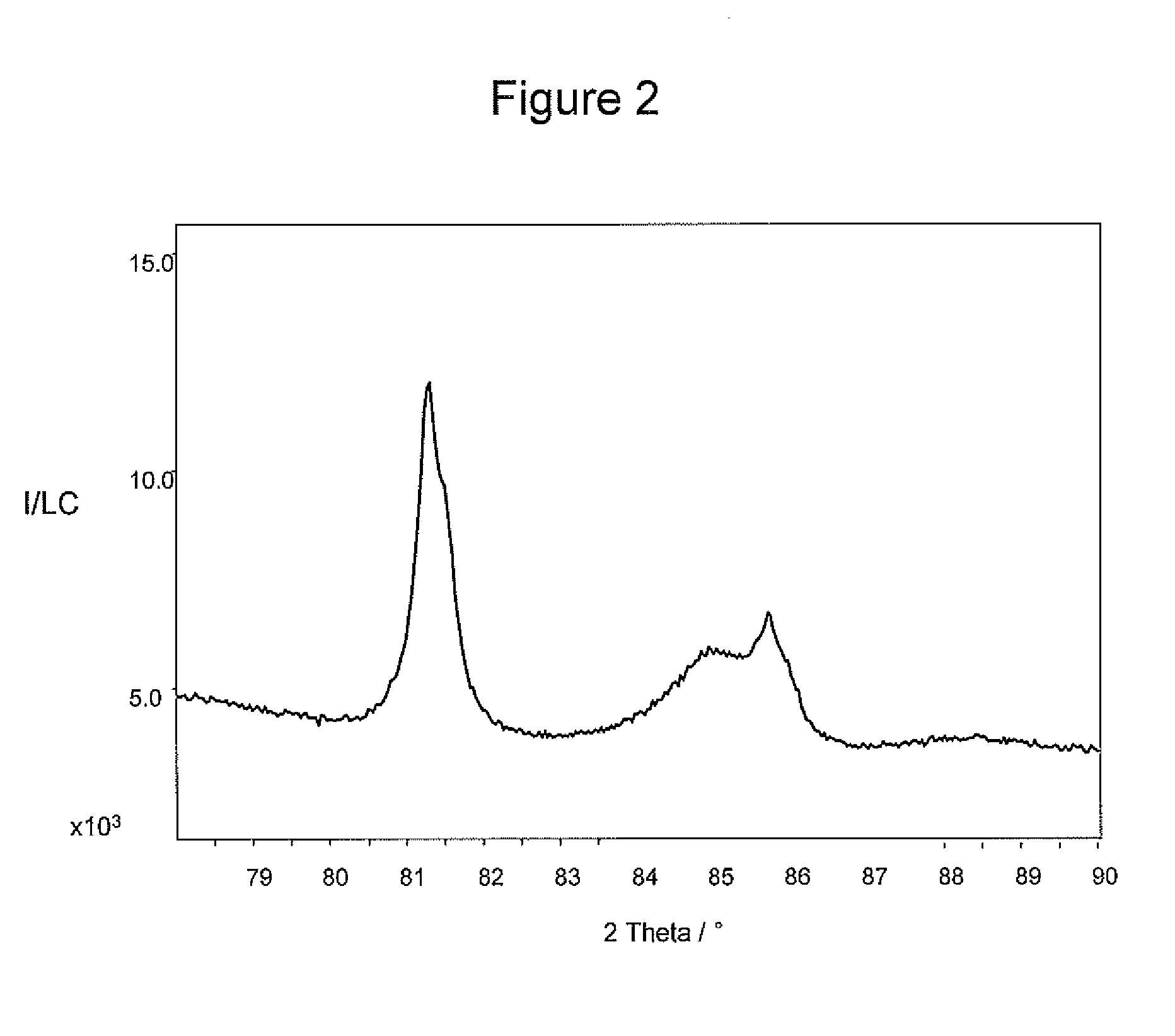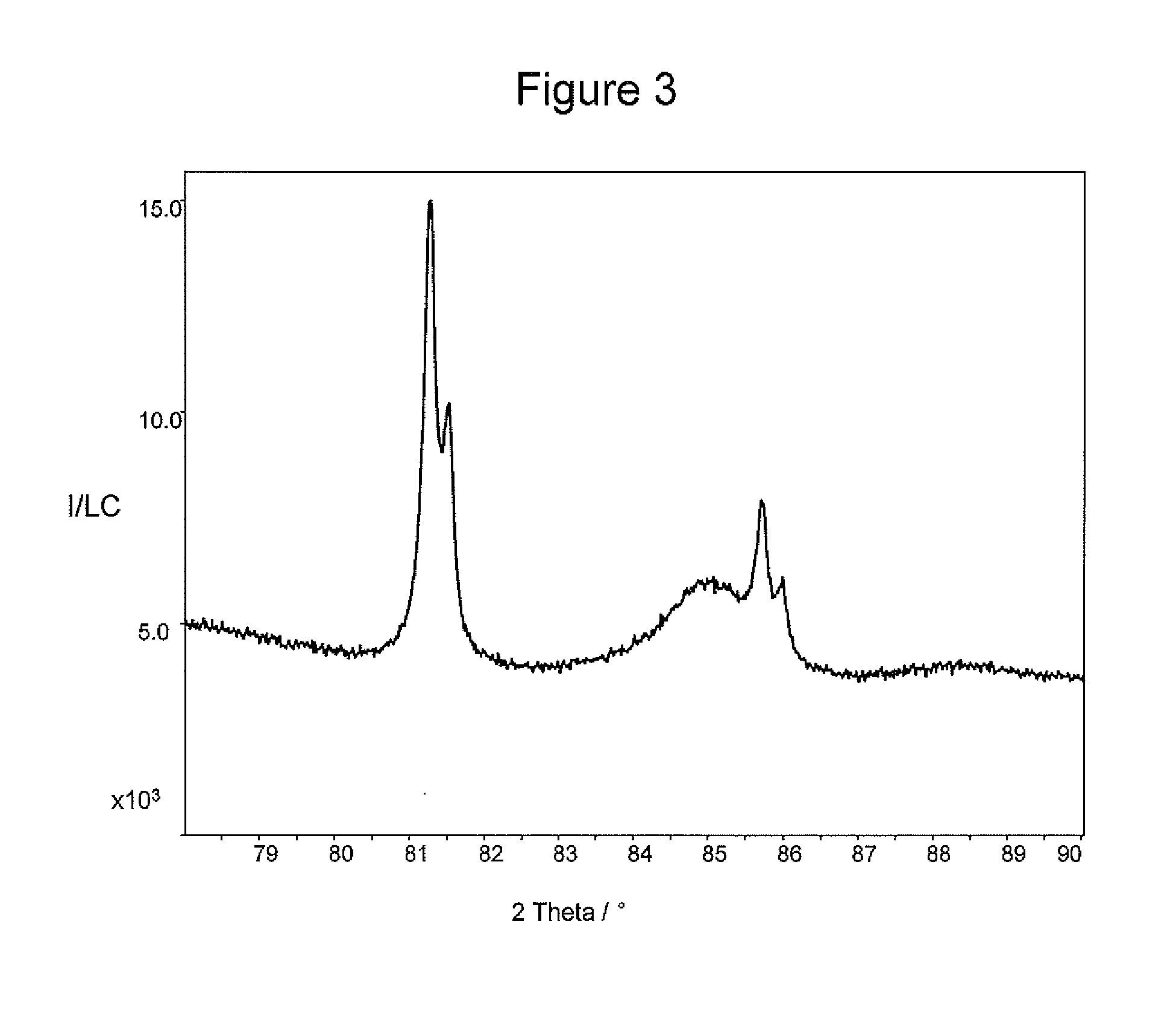Preparation of Diesel Oxidation Catalyst Via Deposition of Colloidal Nanoparticles
a technology of colloidal nanoparticles and catalysts, which is applied in the direction of metal/metal-oxide/metal-hydroxide catalysts, physical/chemical process catalysts, and separation processes, etc., can solve the problem of difficult to support only the precious metal of a desired cluster size on the oxide support, and the structure of the resulting materials is often limited in the preparation of supported catalysts. , the problem of large-scale applications of cluster-derived catalysts is problematic, and the difficulty
- Summary
- Abstract
- Description
- Claims
- Application Information
AI Technical Summary
Benefits of technology
Problems solved by technology
Method used
Image
Examples
example 1
[0110]10.2 g of an H2PtCl6 solution containing 5.1*10−2 moles of Pt per liter of solution were diluted in 400 ml of water and an opportune amount of a PVP solution containing 10 mg of PVP per ml of solution was added in order to achieve a Pt / PVP weight ratio equal to 1. After letting the solution stir at room temperature in air for 1 hour, NaBH4 was added to the solution at room temperature. The amount of NaBH4 was chosen in order to have a Pt / NaBH4 weight ratio of 1 / 2. Following stirring for 1 hour in air of the obtained mixture, an appropriate amount of alumina powder was added to the solution in order to achieve a total metal loading of 1% wt / wt and the pH adjusted to a value of 2.4 with an HCl solution containing 15% HCl in weight. After 30 minutes of stirring the solution was filtered and the solid powder recovered.
example 2
[0111]The same process and quantities of reagents were used as in Example 1 with the exception of the PVP addition. Here an opportune amount of PVP solution containing 10 mg of PVP per mg of solution was added in order to achieve a Pt / PVP weight ratio equal to 2.
example 3
[0112]The same process and quantities of reagents were used as in Example 2 with the exception that 6.6 g of an H2PtCl6 solution containing 5.1*10−2 moles of Pt per liter of solution were diluted in 400 ml of water together with 110 mg of K2PdCl4.
[0113]As one can see from FIG. 1, the precious metal nanoparticles comprise both platinum and palladium and the composition is the same as one would expect from the relative ratio of platinum and palladium when calculated based on the mol of precious metal.
PUM
| Property | Measurement | Unit |
|---|---|---|
| diameter | aaaaa | aaaaa |
| molar ratio | aaaaa | aaaaa |
| molar ratio | aaaaa | aaaaa |
Abstract
Description
Claims
Application Information
 Login to View More
Login to View More - R&D
- Intellectual Property
- Life Sciences
- Materials
- Tech Scout
- Unparalleled Data Quality
- Higher Quality Content
- 60% Fewer Hallucinations
Browse by: Latest US Patents, China's latest patents, Technical Efficacy Thesaurus, Application Domain, Technology Topic, Popular Technical Reports.
© 2025 PatSnap. All rights reserved.Legal|Privacy policy|Modern Slavery Act Transparency Statement|Sitemap|About US| Contact US: help@patsnap.com



